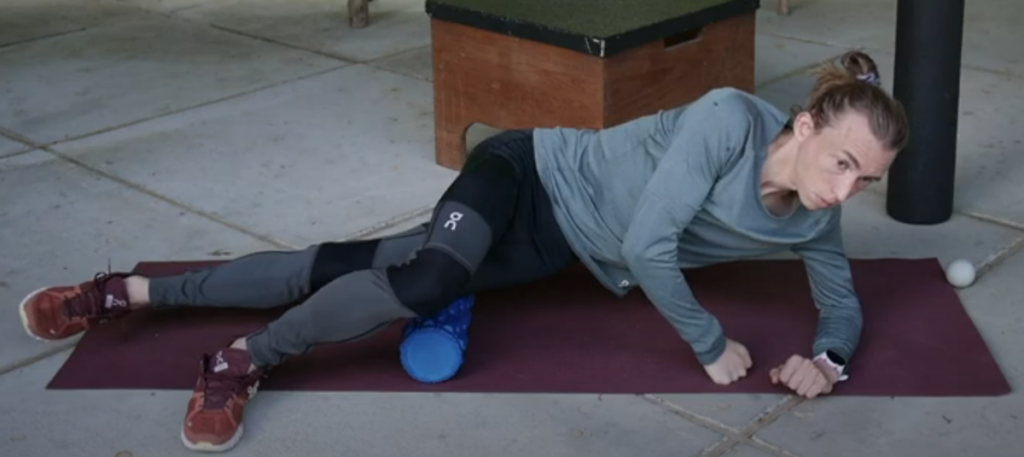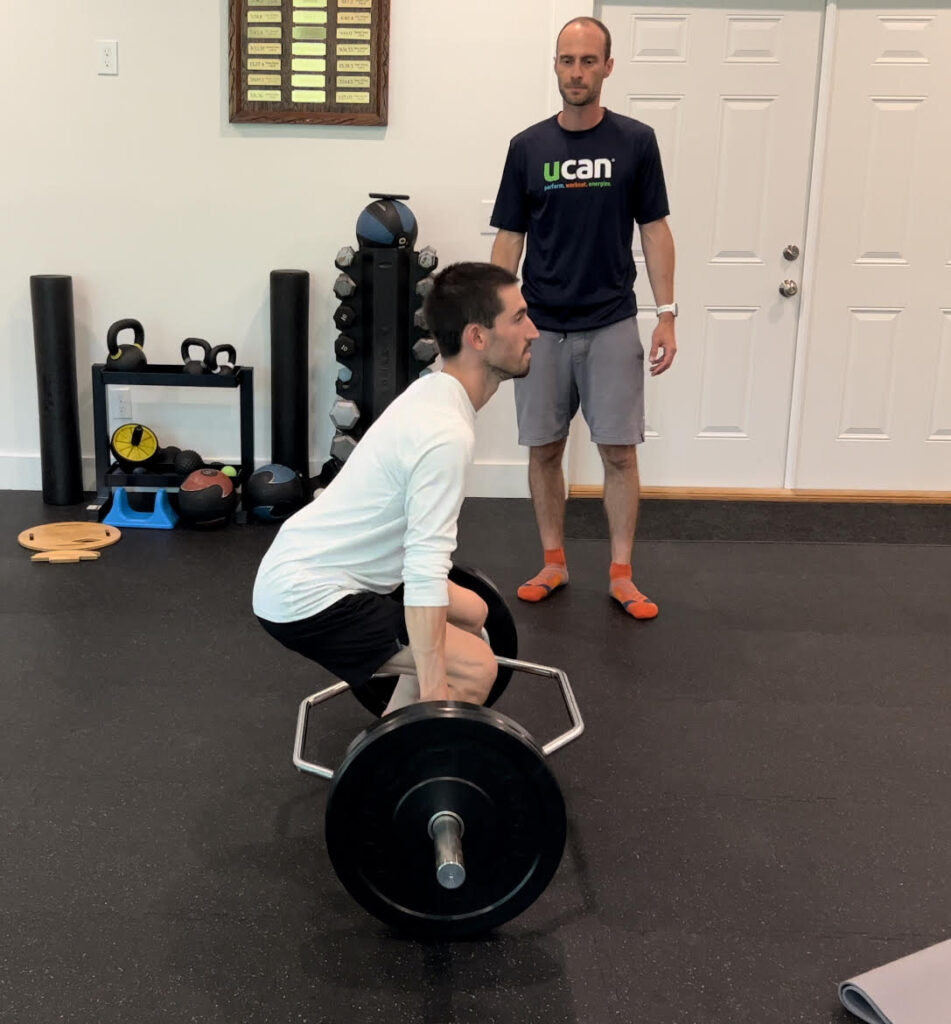If you’re a runner you are familiar with muscle tightness. Less common however, is knowing what to do about it. I don’t have all the answers, but I do want to outline 4 common causes of muscle tightness and how to combat them.
The first thing to understand, is that not all muscle tightness is created equal. Meaning, the better we understand the underlying or potential causes, the better can address the problem. The first common cause of muscle tightness is a muscle strain. Even if you’ve never had a muscle strain (which, let’s be honest, we all have), you’re undoubtedly familiar with them.
Muscle Strain
A muscle strain is typically an acute injury where you’re running or moving and feel a sudden grab or pain in the muscle. However, they can also be caused by chronic overuse. This type of strain can present as more of an increasingly sore or tight muscle over time. It tends to get more painful through the run and alters running form.
Regardless, a muscle strain is a tear in some of the muscle fibers. And what happens when those fibers tear is the surrounding tissue often tightens up in an effort to protect the injury. This is why a strained muscle feels tight. And that tightness is what triggers our instinct to stretch it. But if you have tears in the muscle fibers, the last thing you want to do is stretch them and pull more on that injury.
There are 3 things you want to do instead: Rest, Compression, Exercises. You may be familiar with the R.I.C.E protocol. And if you are, you’ll notice the “Ice” missing from my list of recommendations. (You’ll also notice we substituted “elevation” with “exercises.) There is inflammation in that area, but research has begun to show that inflammation is helpful. The inflammation is the body sending in the EMT’s to help heal and repair the damage. This is a good thing and icing or anti-inflammatories can blunt that response in the short run.
The compression is going to support the muscle to help prevent over use or over extension. The rest is about letting that healing take place without placing added strain on the tissue. And the exercises should be worked in after the initial inflammation has calmed down after a few days. As it relates to returning to run or any other activities, pain will be the guide.
Muscle Tightness: Fascia Adhesions
Muscle fascia is a spider web-like tissue that surrounds our muscles. Fascial adhesions, the fascia becoming stuck and bound, is a common form of muscle restriction. This form of muscle tightness is another good example of one where the tight sensation makes us want to stretch. However, stretching isn’t an effective remedy for release fascial adhesions.
Getting on a foam roller, therapy ball, or lacrosse ball to roll through the tissue regularly is a great way to prevent these adhesions from causing restriction. However, if you’re past prevention, the foam roller may have a limited impact.

Using a lacrosse ball or therapy ball to dig into the “tight” area, as well as above and below it, is a more effective tool. And even better is to see a massage therapist, A.R.T provider, or someone who can perform Graston Technique. Some of the best therapists we’ve worked with area sports based chiropractors who have these certifications.
When you’re working through the issue on your own try using a variety of techniques. Roll through the area. Try to pin down the tissue and move the muscle under that tension. Roll across the muscle tissue. Here is a good example of how to do this on the calf muscle.
Compression Restriction
Our third type of muscle tightness, or restriction, is compression. This is where layers of tissue become bound together. We want to have mobility between our layers of muscle, fascia, and skin. Those layers can become stuck together, causing muscle tightness. Kelly Starrett talks about this in his book, Becoming a Supple Leopard, and it’s often overlooked.
Our posterior, particularly glutes and upper hamstrings, are particularly prone to this. We spend so much time sitting throughout the day that those tissues can easily become compressed and stuck together. Once again, massage is a great way to release this restriction. But using a lacrosse ball or ribbed foam roller to work through those areas. We want to sheer those areas a apart a little bit to restore proper gliding between the tissues. Here is a good example of Kelly explaining this with the high hamstring. Rewind the video to get the full explanation.
Misaligned Muscle Fibers

Picture a group of muscle fibers all nicely aligned next to each other. They’re smooth, all running the same direction. When we damage the muscle through a strain or just intense usage that picture can shift. The fibers can become misaligned or stuck together. This misalignment can cause restriction. And the stickiness can be a precursor to a chronic muscle strain.
If you train consistency and push yourself, you will inevitably come across this issue. Regular foam rolling is a wonderful preventative tool. But massage therapy is one of best ways to keep those fibers in-line, functioning smoothly. Jay Dicharry discusses this in his book Running Rewired (another highly recommended read.) Additionally, regular strength training is perhaps the best preventive tool. Strength training can give the body the stability to withstand higher training loads. This prevents the mechanical breakdown that can lead to misaligned fibers and general overuse injuries.
Muscle Fiber Restriction
When the fibers come stuck together they get overworked and can lead to the strain we discussed previously. The key to understanding this stickiness problem is understanding how muscles work. When we run we aren’t utilizing all our muscle fibers. Some fibers work for a bit, then take a rest while others pick up the task. They cycle in and out. When they are stuck together, it becomes more difficult for them to do this and certain fibers can become overworked.
The same type of work we discussed in the compression section will help alleviate this issue. But one I want to highlight is cross-friction massage. Most massage is done with the grain of the muscle, just like you cut a steak. But with cross fiber massage, we’re moving across the grain of the muscle. For the hamstring, the fibers run up and down from your butt to your knee. For cross fiber massage you want to work across those fibers. (This is the pressure wave technique discussed in the calf foam rolling video I linked earlier.) This can help splice the fibers apart to restore independence of movement.
Treatment Options
We covered a lot here, but the nuance of these issues really informs how to address them properly. And it’s important to note that sometimes it’s impossible to know which type of restriction you’re dealing with. With the ZAP professional team we incorporate all of the treatment options above as part of our maintenance strategy. And when we have a more acute issue, we’ll explore a variety of treatment options, knowing that one is likely the key to solving the issue.
Interested in Learning more about ZAP’s 1-on-1 Coaching Services? Click Here.